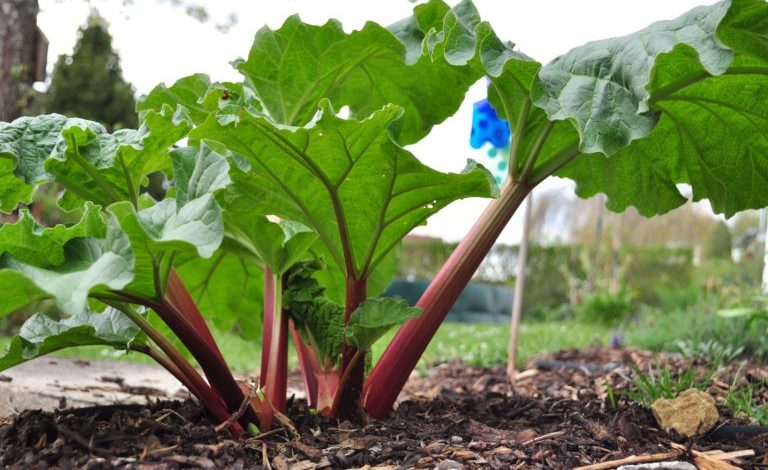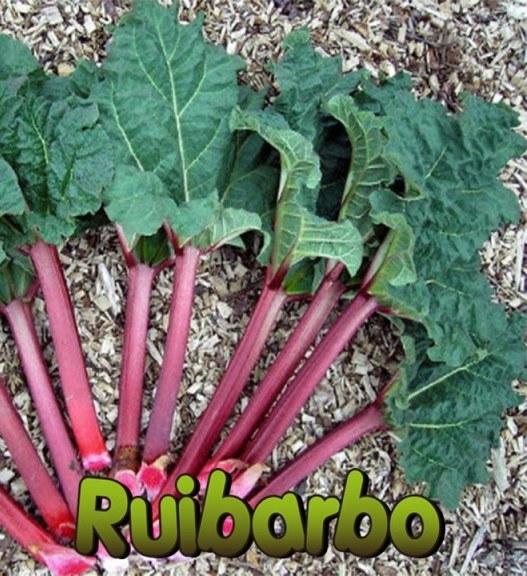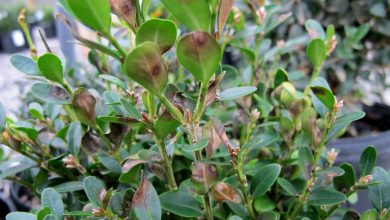How to grow rhubarb in the garden step by step: Complete guide

Hello Agrohuerters, today I am going to talk about rhubarb, we continue with lesser known or consumed vegetables, and that really have many health benefits. Rhubarb (Rheum rhabarbarum L.) is a perennial plant (this means that it lasts for years). It is native to Eastern Europe (Ukraine, Russia) and Asian countries.

What is consumed are the petioles, whose flavor is slightly acidic. The leaves are not consumed as they are very toxic, so they are removed and can be added to the compost to be used. Rhubarb can grow to a little over a meter, so they are quite large plants, this must be taken into account when growing it.
How to grow rhubarb
To grow rhubarb just follow these steps:
How to plant rhubarb
Rather, it is recommended to buy the plant or rhizomes and transplant it, because there are usually many abortions at planting. If we decide to sow it, it will have to be done in the spring in the seedbed and it will be transplanted at the end of winter-beginning of the following spring.
In this case, to make the first harvest, it would be necessary to wait 2 or 3 years. The recommended distance between plants in its cultivation is about 70-90 cm.
Suitable soil or substrate for rhubarb
Rhubarb grows well in adequately fertilized, somewhat light, well-drained soils. The pH should be around neutral or slightly acidic 6-7. It is important that when transplanting into the ground, it is free of weeds. Because once the rhubarb plants have grown, the weeds will be very difficult to get rid of.
How to water the rhubarb crop
It is advisable to keep the soil moist, without puddles. This can be done by watering frequently but with a small amount of water, especially in summer. Likewise, it is important that it does not lack water during the development of its leaves (this is almost at the end of spring when there are no frosts).
Optimum climate for rhubarb
This plant can adapt to different types of climates. What it undoubtedly needs is to be cold in winter in order to grow properly, which is why the transplant is not done in the hot months. The colder the plant spends in winter, the more intense the red of the stems will become.
In winter, most of the aerial part of the plant disappears, but the rhizomes remain in the soil, accumulating reserves, so they should not be uprooted.
Prune the rhubarb
To focus production on the stems and for them to thicken as much as possible, it is convenient to cut the flowers when they appear. As it has quite large leaves, it is advisable to remove those that seem sick or attacked by fungi.
How to fertilize rhubarb
It is recommended to make a good subscriber before sowing or planting. But as nutrients are being lost, it is recommended after making the harvests to add earthworm humus, given its high nitrogen content.
Rhubarb Pests and Diseases
Rhubarb continues to be a very rustic plant, and few pests affect it. What it is usually most susceptible to is fungi, especially rust. This is partly due to the large size of its leaves, the enormous amount of these and the environmental humidity, all of which generates a good environment for the development of fungi.
To avoid this, sometimes it will be necessary to prune some leaves to favor ventilation in the plant. In addition, it is necessary to dispense with watering on humid days and if the fungus is already installed, it would be necessary to use an ecological fungicide.
Benefits and properties of Rhubarb
This vegetable has a very low content of sugars and fats, it is also very satiating, so it is highly indicated for slimming diets. On the other hand, it helps calm stomach problems, as well as pain or diarrhea.
As I have said before, the leaves are toxic and should not be consumed. They have high contents of oxalic acid, which means that a high intake of this compound can cause kidney problems. This acid is also found in the stems but in much lower amounts, to lower this concentration even more, it is usually boiled and discard the cooking broth. In this way it can be consumed without any problem.
We should not be alarmed or not introduce this vegetable into our diet because of this fact, since other vegetables such as spinach also contain oxalic acid, the only drawback is that in rhubarb it is excessively concentrated in the leaves.
As for the preparation of this plant in the kitchen, it is used both for desserts and for main dishes, there are many recipes that you can prepare.
Finally I want to add that if you want to grow rhubarb in a gardener, it is convenient that it be large, both in depth and width, but you can adapt it to the container by pruning, this process must be repeated year after year. Greetings Agrohuerters!


![Photo of Grow Mushrooms in Alpacas: [Planting, Care and Irrigation]](https://www.complete-gardening.com/wp-content/uploads/2022/08/grow-mushrooms-in-alpacas-planting-care-and-irrigation-390x220.jpg)

![Photo of Indoor Hanging Plants: [15 Examples + Care, Watering and Substrate]](https://www.complete-gardening.com/wp-content/uploads/2022/08/indoor-hanging-plants-15-examples-care-watering-and-substrate-390x220.jpg)
![Photo of Plant Sarsaparilla: [Cultivation, Irrigation, Associations, Pests and Diseases]](https://www.complete-gardening.com/wp-content/uploads/2022/08/plant-sarsaparilla-cultivation-irrigation-associations-pests-and-diseases-390x220.png)